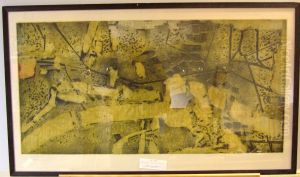C. Casas Paintings
Ramon Casas i Carbó, known as C. Casas, was a prominent Catalan Spanish artist, born in Barcelona on January 4, 1866. He is often associated with the Modernisme movement, the Catalan equivalent of Art Nouveau. Casas was a painter, drawer, and graphic designer who played a significant role in defining the artistic scene in Catalonia and Spain at the turn of the 20th century.
Casas received his initial art education at the Escola de la Llotja in Barcelona, where he studied under renowned artists such as Antonio Caba and Martí Alsina. Seeking broader horizons, in 1881, at the age of fifteen, he traveled to Paris to study art. Paris at the time was the epicenter of the art world, and there, Casas was exposed to contemporary trends and the avant-garde movements that would influence his work, including Impressionism.
Throughout his career, Casas traveled between Barcelona and Paris, absorbing influences and exhibiting his work. His style evolved from the academic realism of his early training towards a more personal synthesis of Modernisme that incorporated elements of French Impressionism and Post-Impressionism. Casas was known for his portraits, which often depicted the intellectual and high society figures of his time, as well as for his scenes of urban life and leisure. His works are characterized by their vivid depiction of the modernity of Barcelona and Paris.
In addition to his painting, Casas was an accomplished graphic designer and his posters and postcards helped to define the visual imagery of the era. He was also a founding member of the influential artistic society known as Els Quatre Gats (The Four Cats), which became a hub for Catalan modernists, including the young Pablo Picasso.
Casas' impact extended beyond his artwork. He was instrumental in organizing exhibitions that introduced Barcelona audiences to contemporary art trends, and he was involved in significant cultural events, such as the Universal Exposition of Barcelona in 1888 and 1929.
Ramon Casas passed away in Barcelona on February 29, 1932. He left behind a rich legacy that continues to be celebrated for its contribution to Modernisme and its reflection of the vibrant cultural life of Catalonia during his lifetime.
